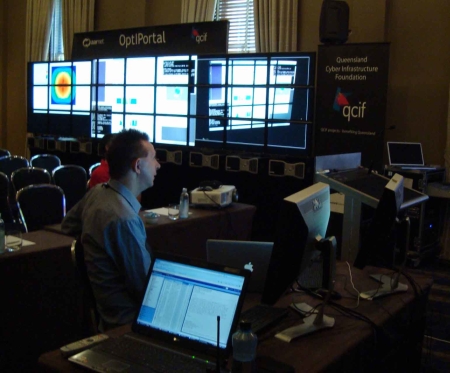APAN Claims Domestic and World Firsts
2/11/10
Sydney, AUSTRALIA – 11 February 2010 – [AARNet] Organisers of the 29th Asia Pacific Advanced Networking Consortium meeting (APAN) held in Sydney earlier this week are claiming a handful of Australian and world firsts. Speaking to Computerworld, Australia’s Academic and Research Network (AARNet) CEO Chris Hancock pointed to telemedicine, IPv6 and Eduroam (a location independent wireless network) demonstrations as highlights.
In what Hancock said was an Australian first, the event witnessed the use of three conferencing technologies – uncompressed DVTS, Polycom’s large-scale equipment, and desktop solution VIDYO – to observe anendoscopic operation.
The video stream of the operation was viewed by people around the Asia-Pacific region.
“I think this sort of stuff is not being done anywhere in the world, quite frankly,” Hancock said. “The US and Europe are doing it, but Asia seems to have a wonderful telemedicine stream.”
Healso noted the IPv6 stream that let attendees access Google and YouTube over the next generation internet protocol and an Eduroam wireless network demonstration – what is being claimed as a world first – that took place on a boat on Sydney Harbour and then moved onto Shark Island.
“We took a UPS (uninterruptible power supply), a WiFi access point and 3G router and created a 3G cloud basically.”
Participants were then able to take photos on their mobile phones and send pictures of the iconic harbour views around Asia.
Other announcements to come out of the event, which was held over four days from February 8-11, include AARNet launching a partnership with the University of Queensland, Queensland Cyber Infrastructure Foundation (QCIF) to offer “Australia’s first SAGE Bridge to support the multi directional streaming (or visual casting) of ultra high resolution videos and images at up to five Gigabits per second (Gbps)”.
The organization also revealed Southern Cross Cable Networks (SCCN) extended its sponsorship arrangement for the SXTransPORT to continue providing dual 10 Gbps capacity in “North America for scientific,research and education traffic through until 2020”.
